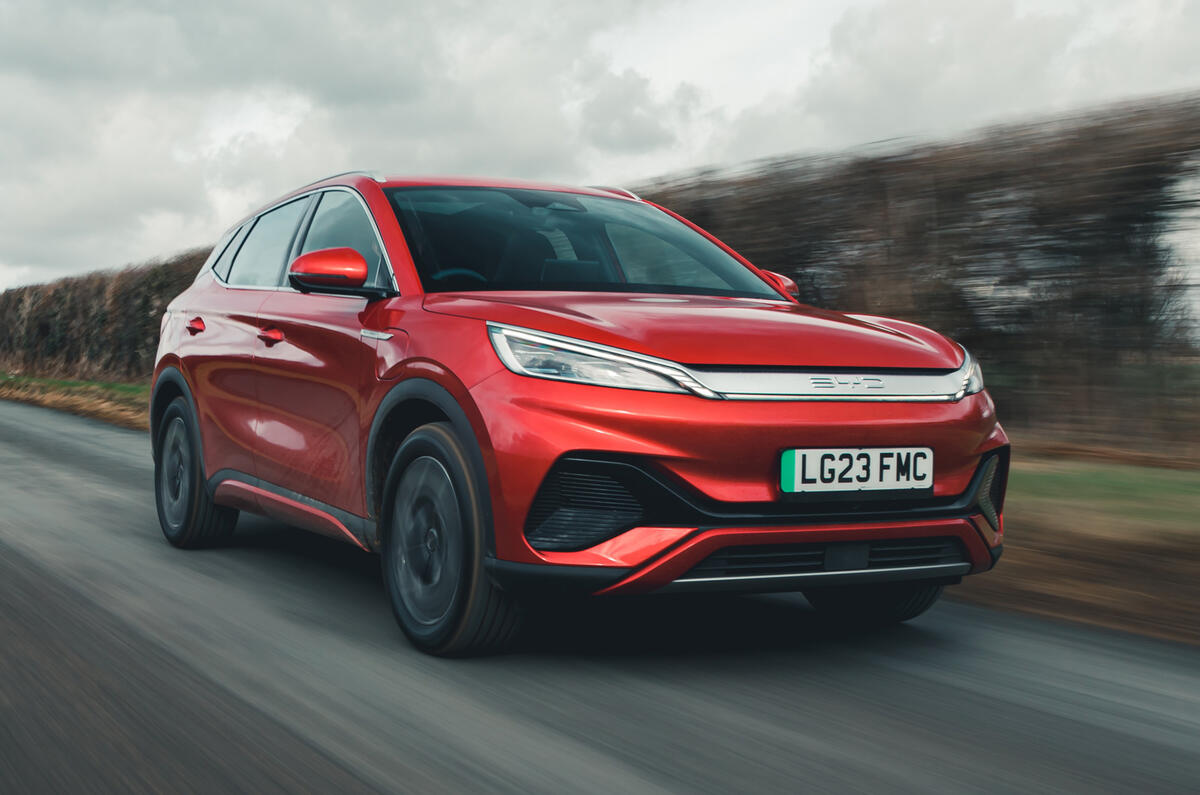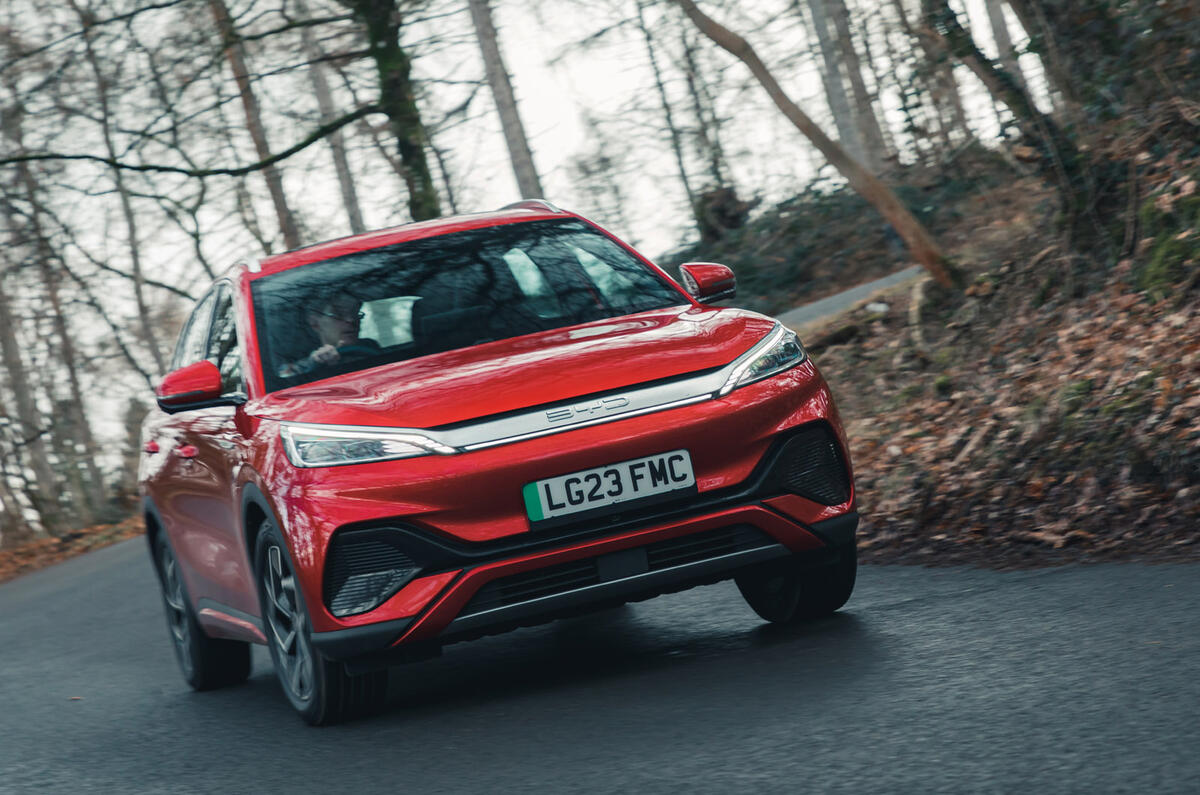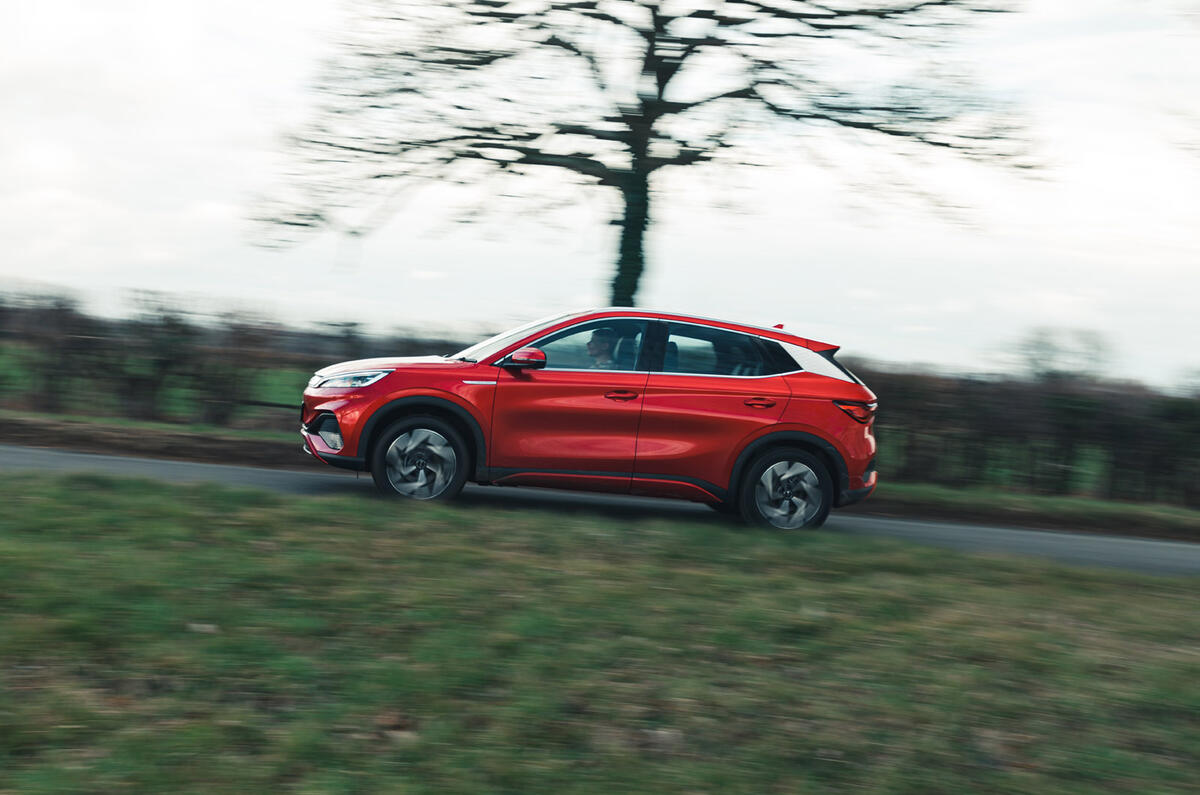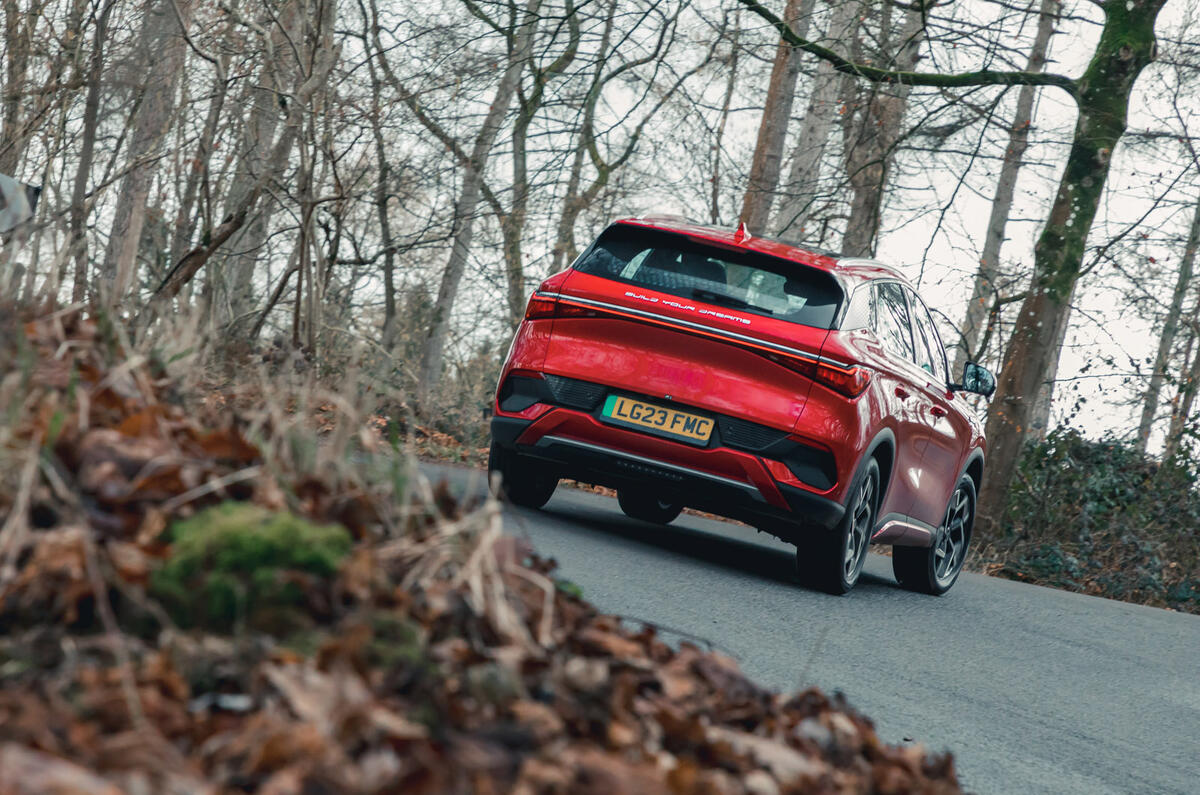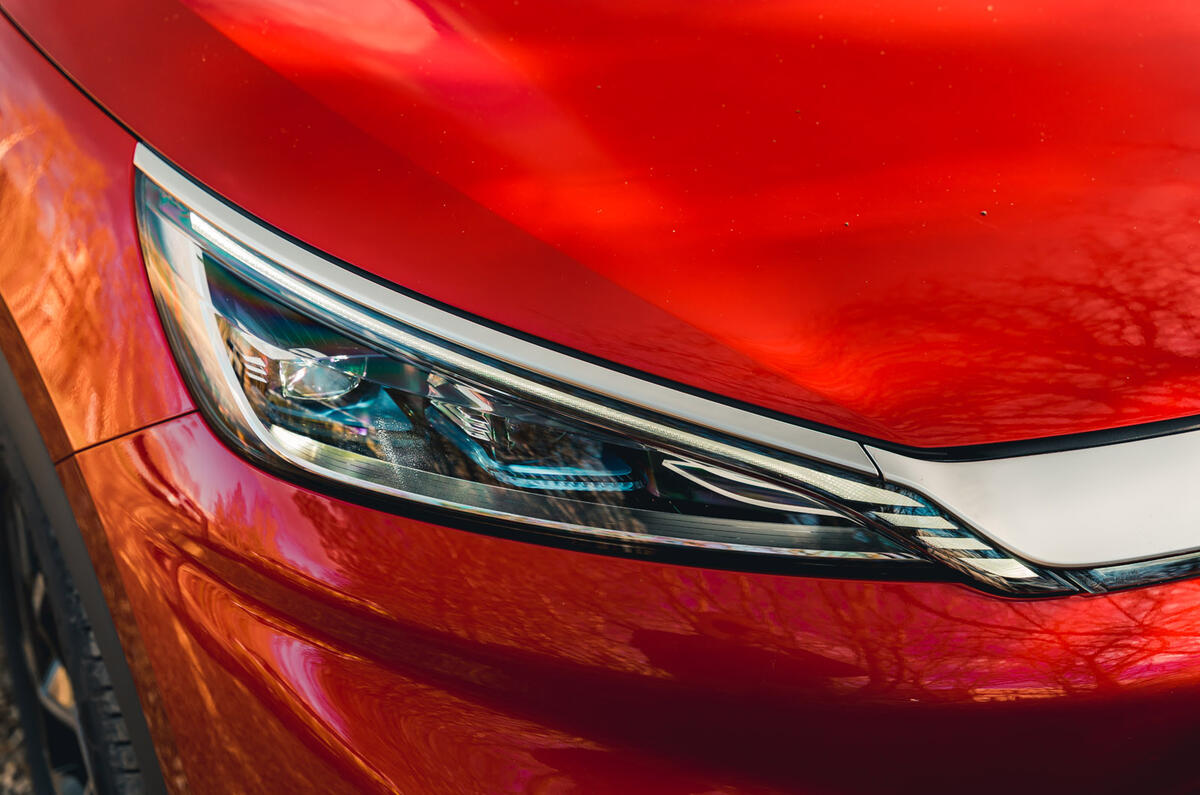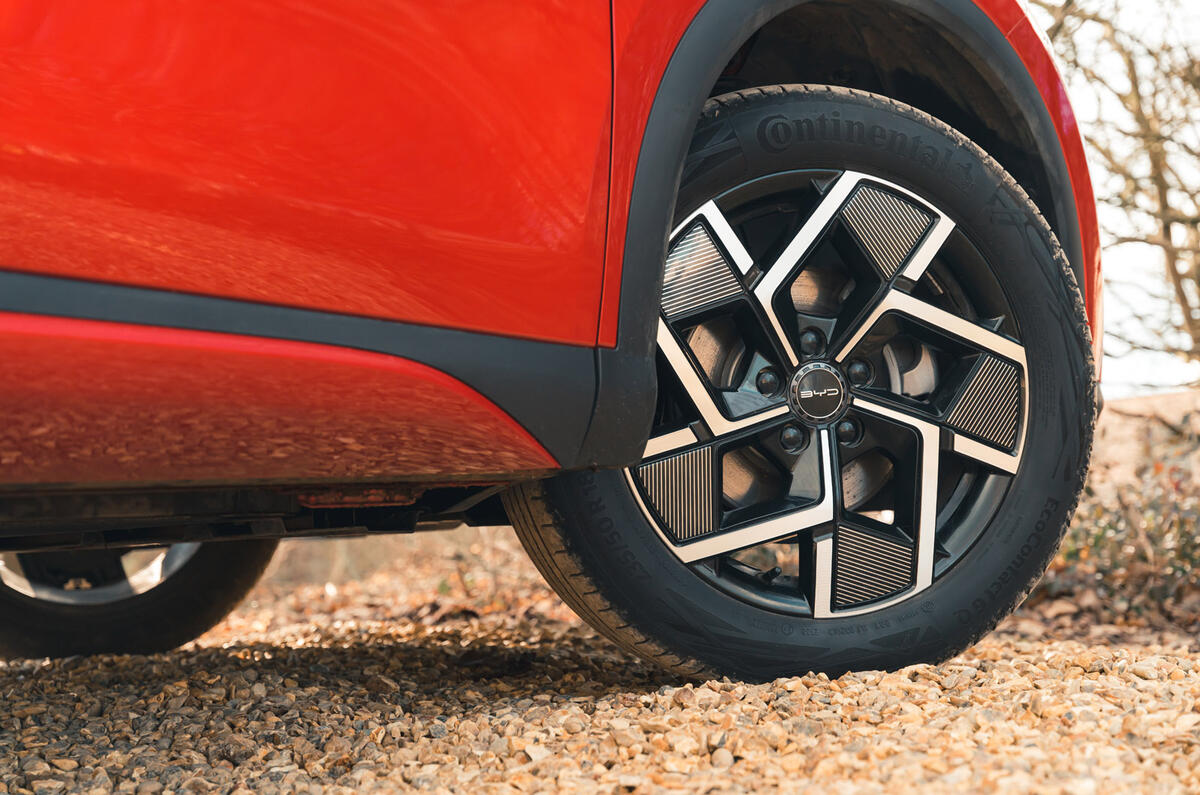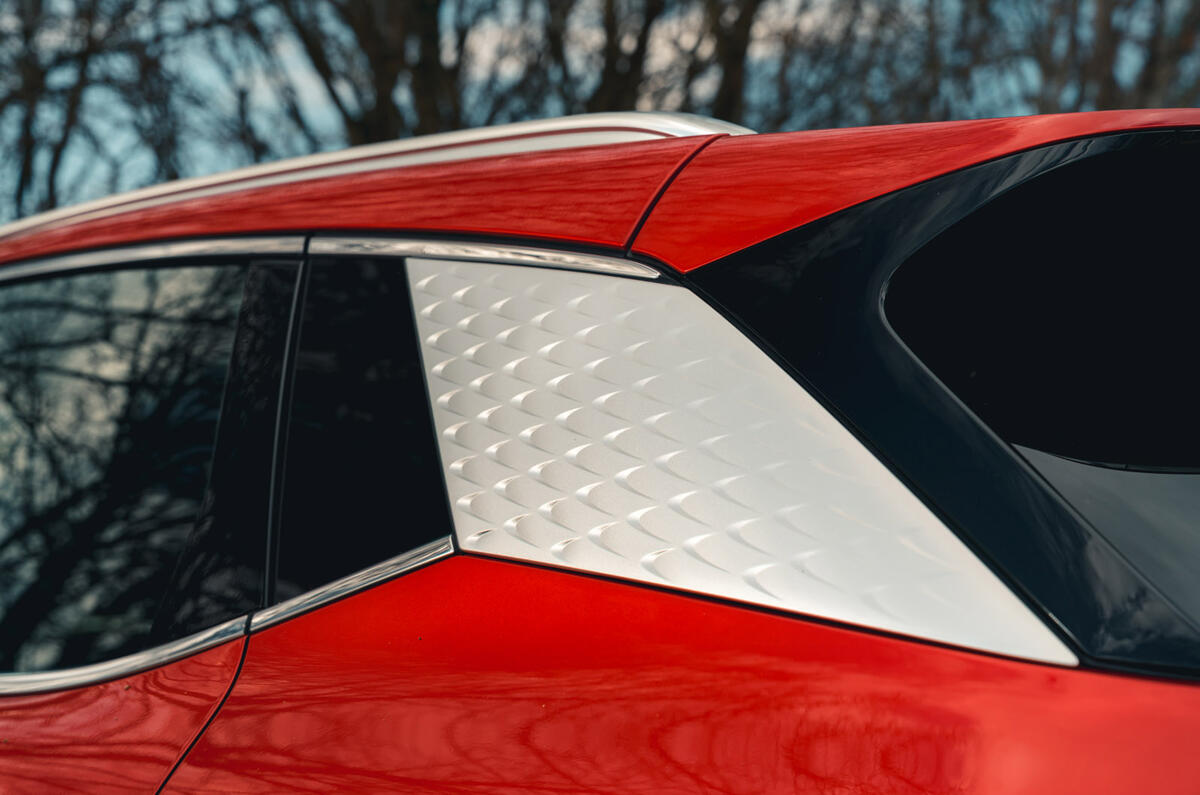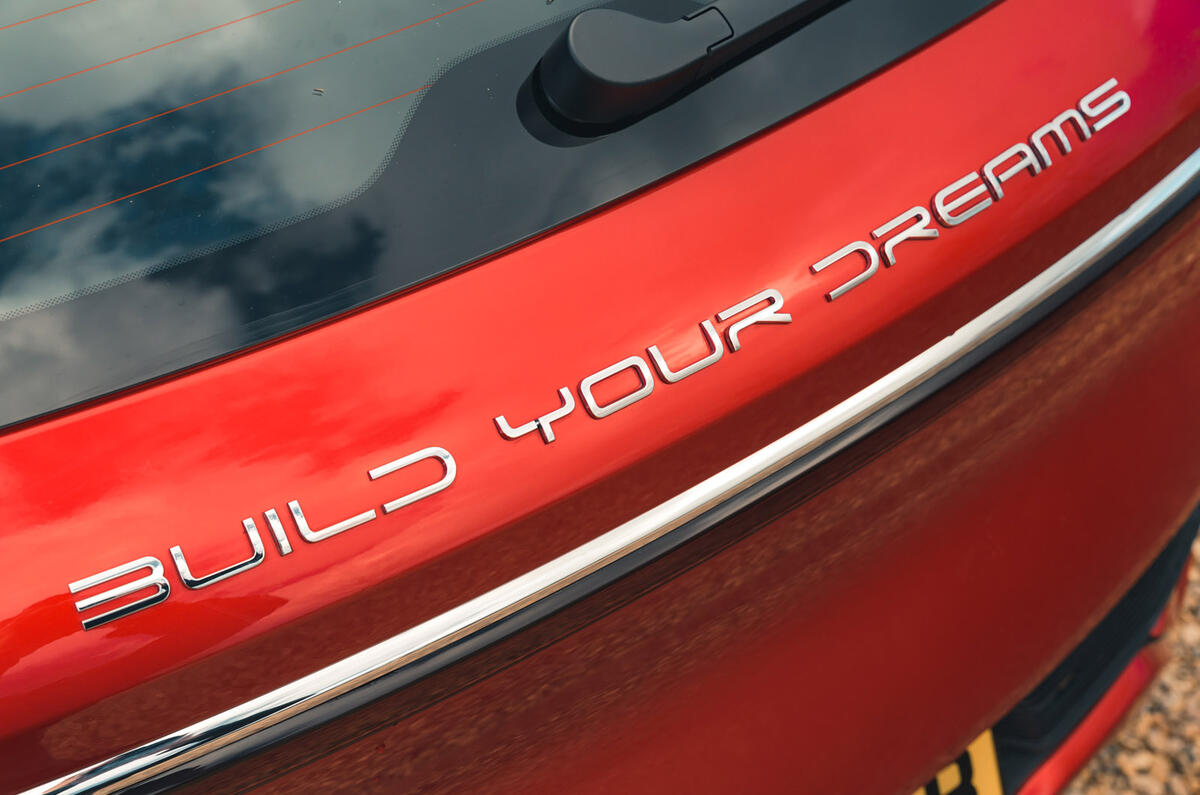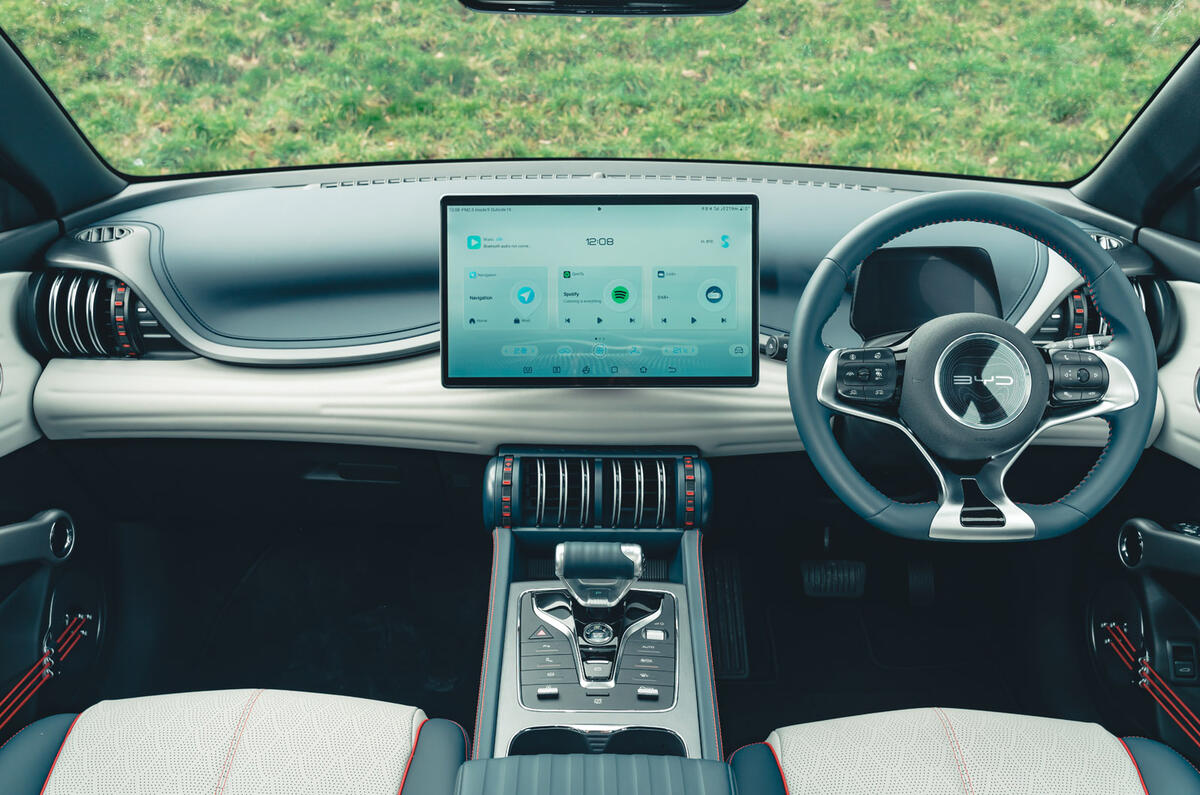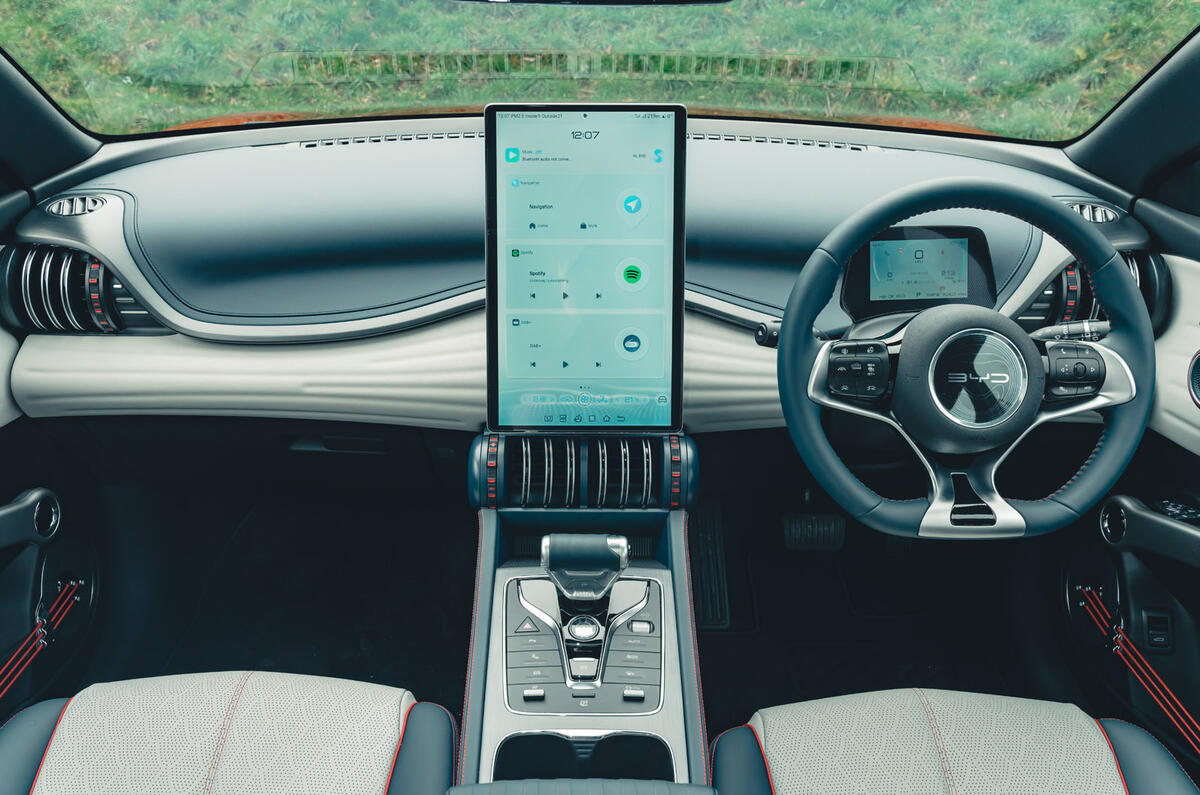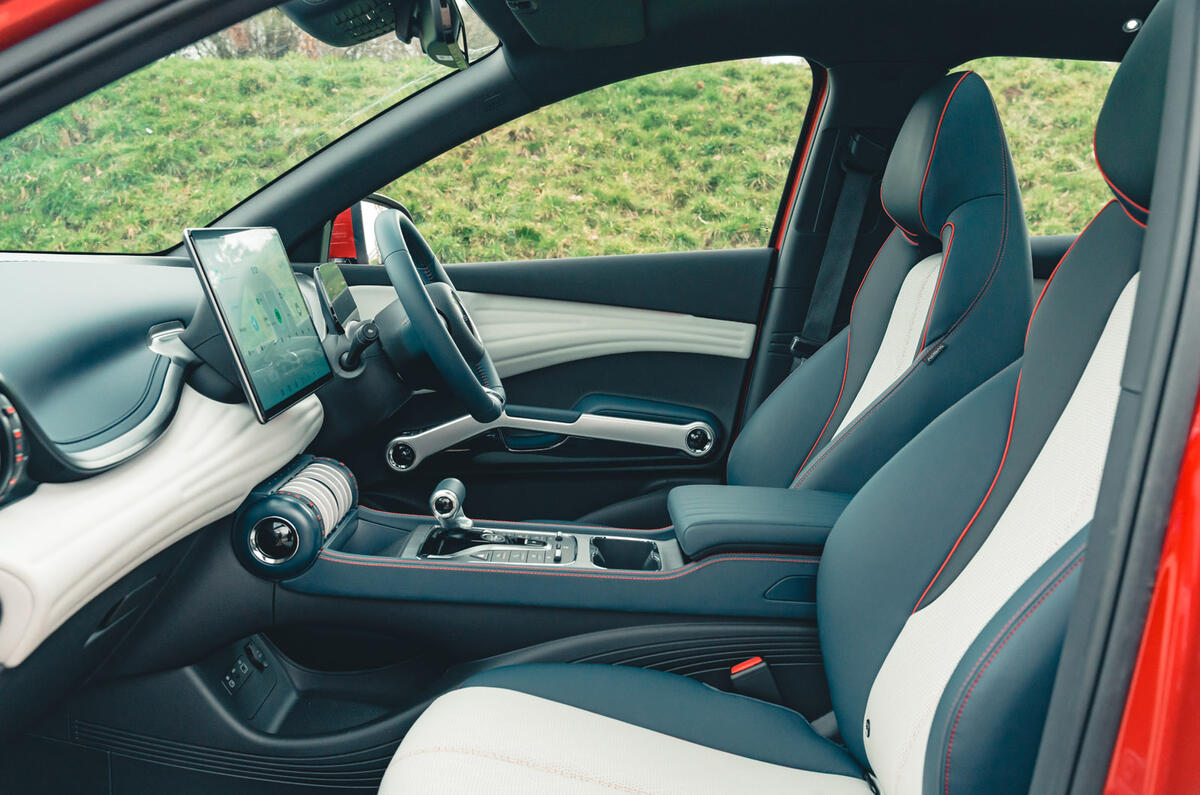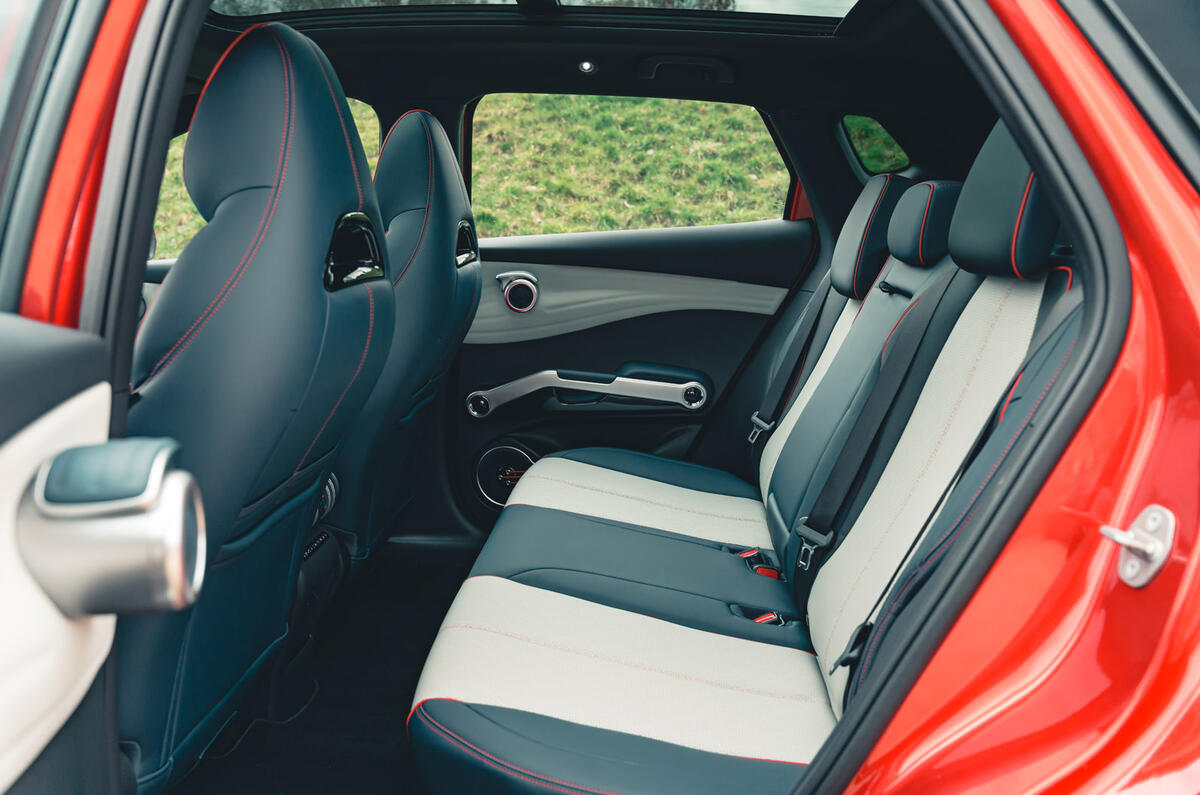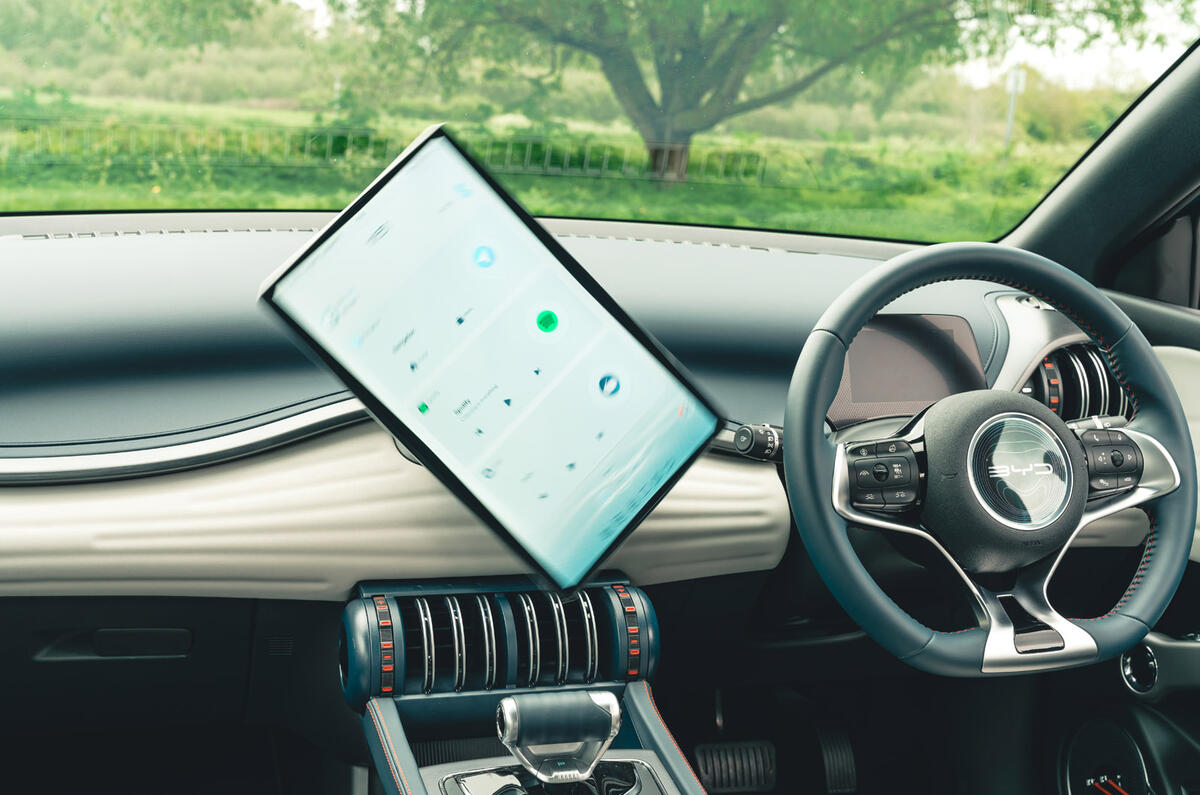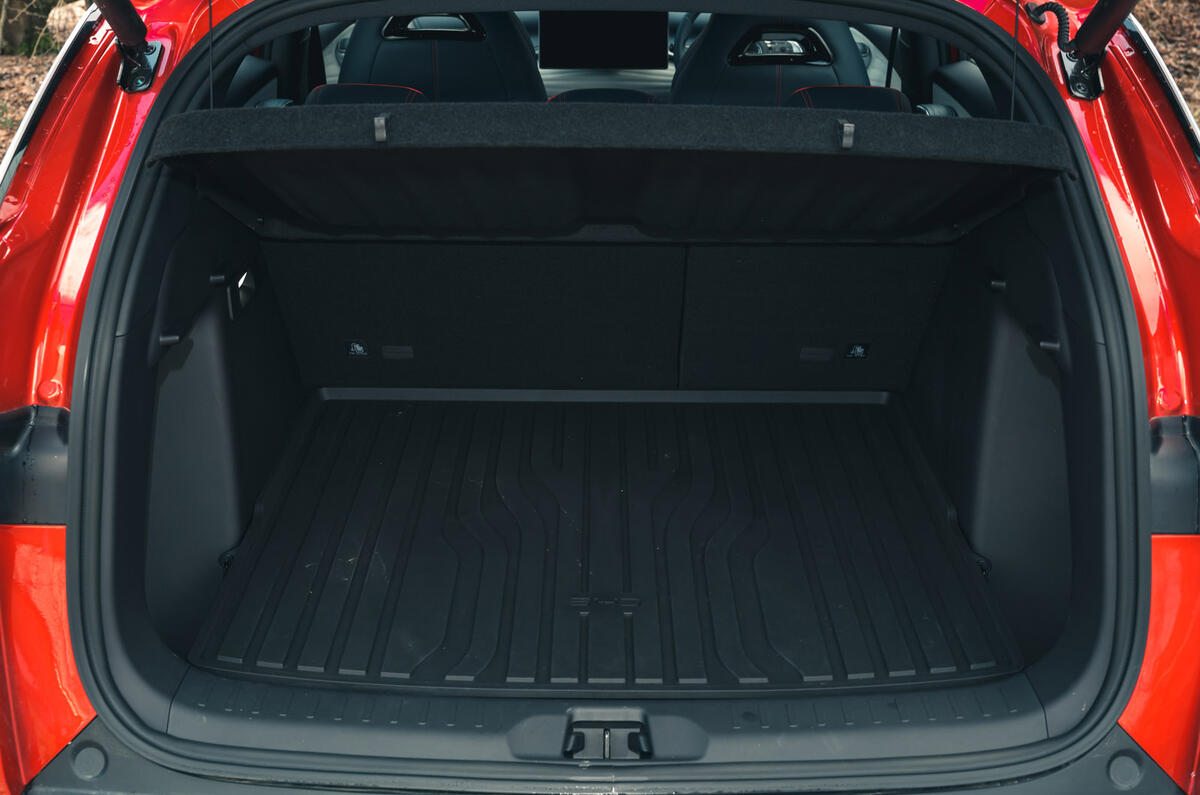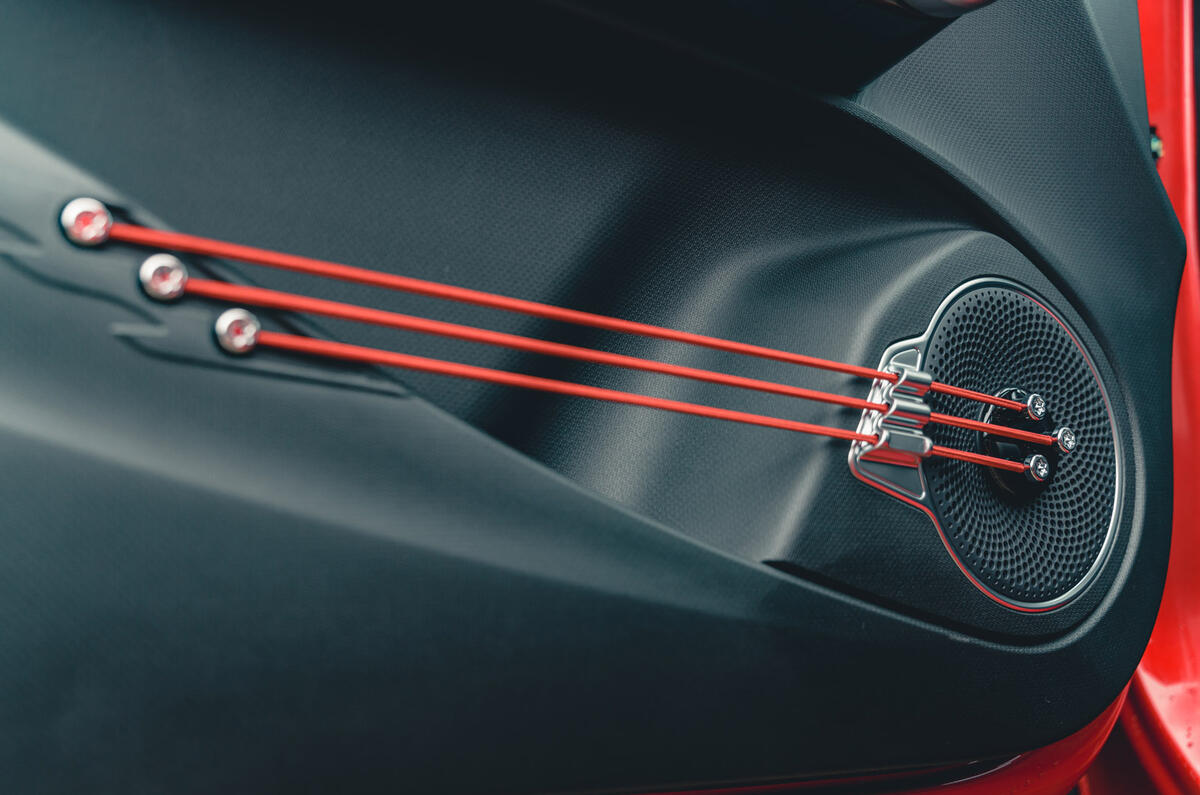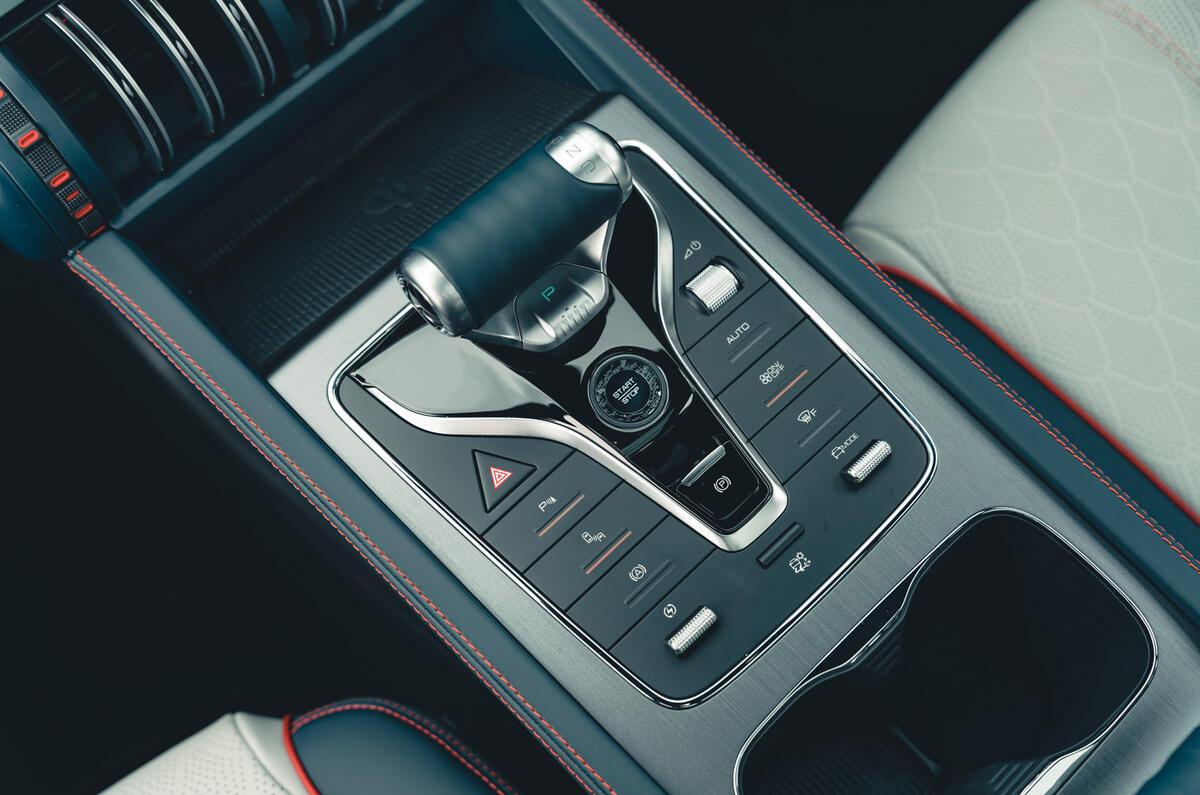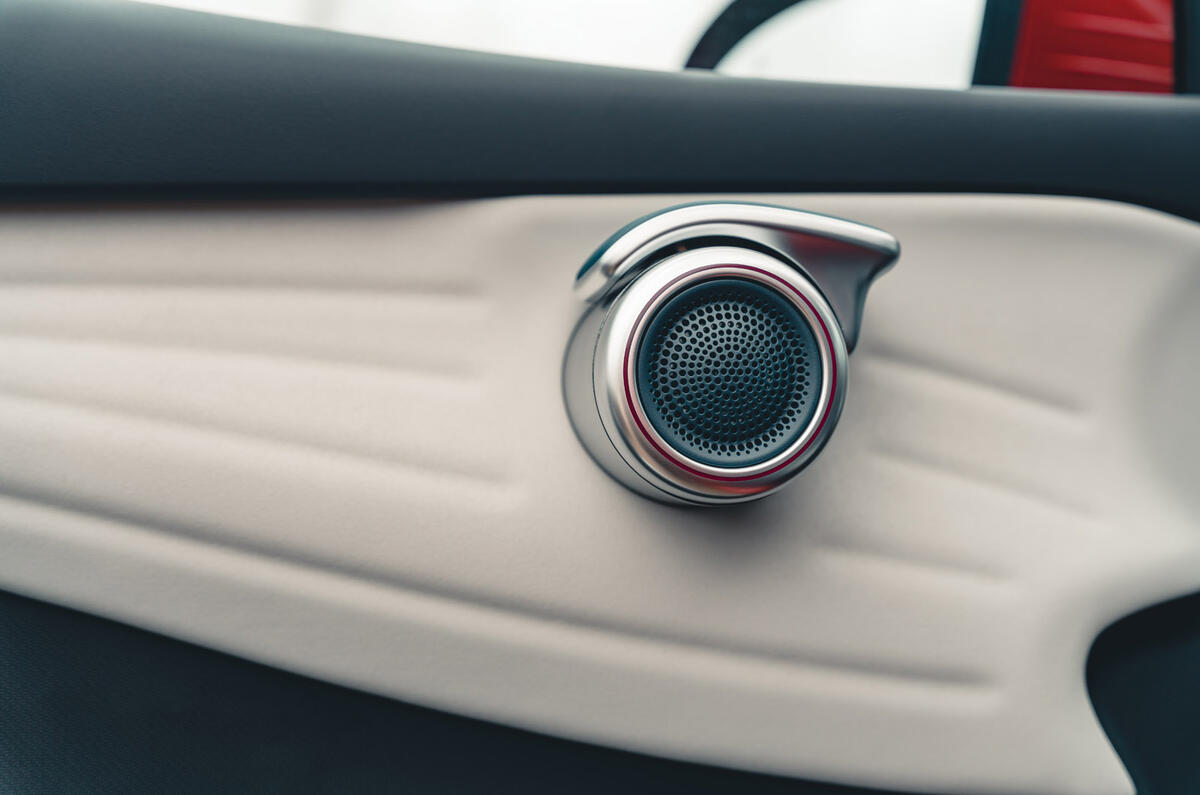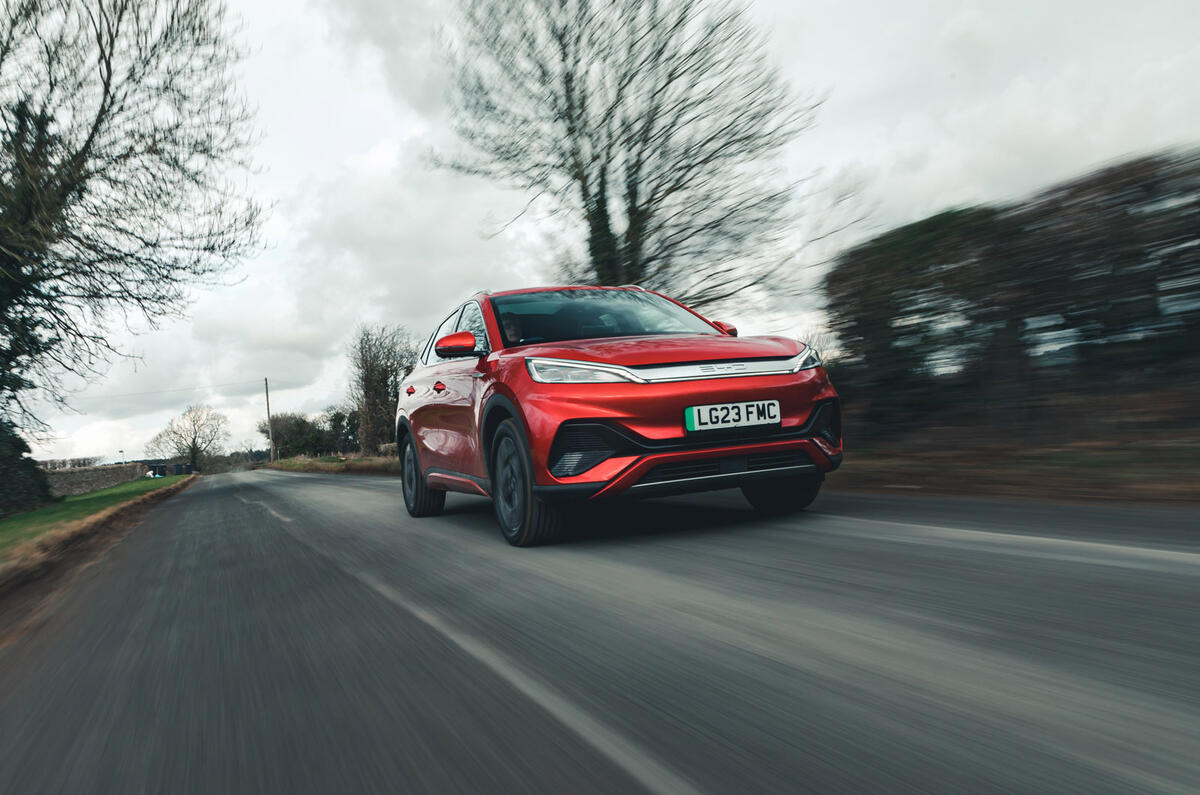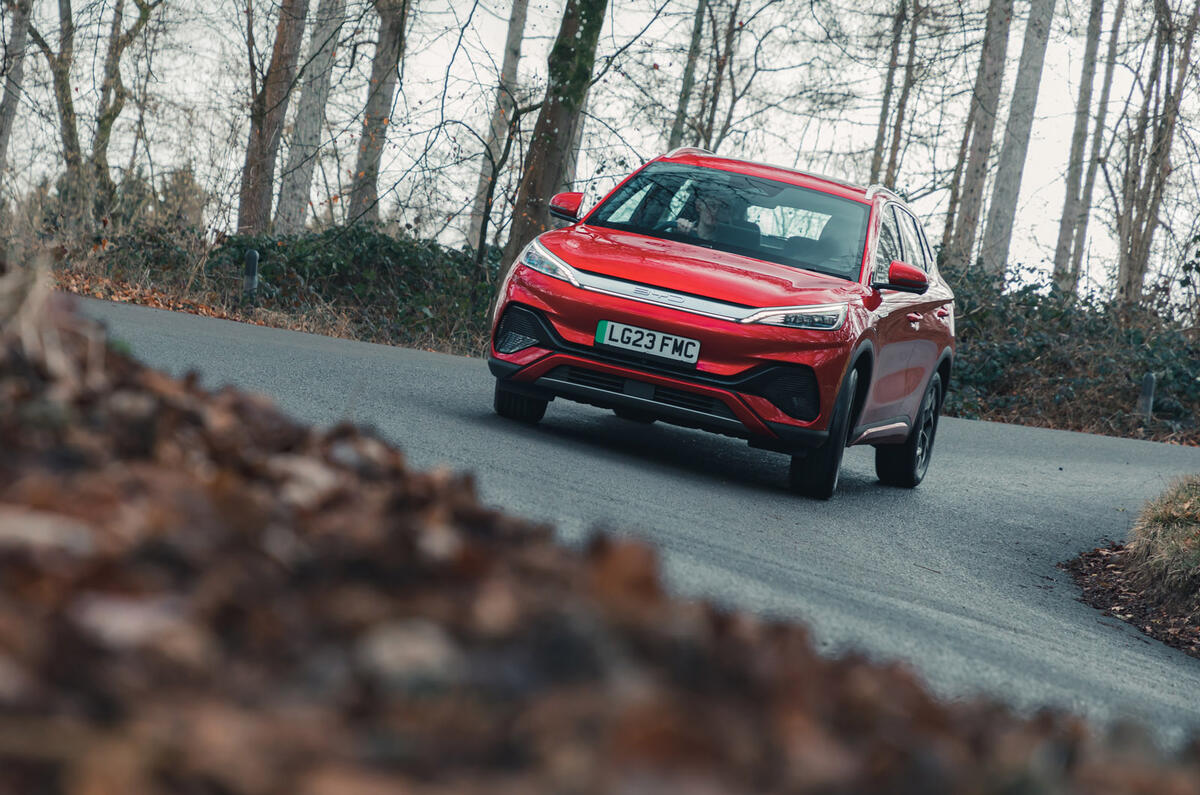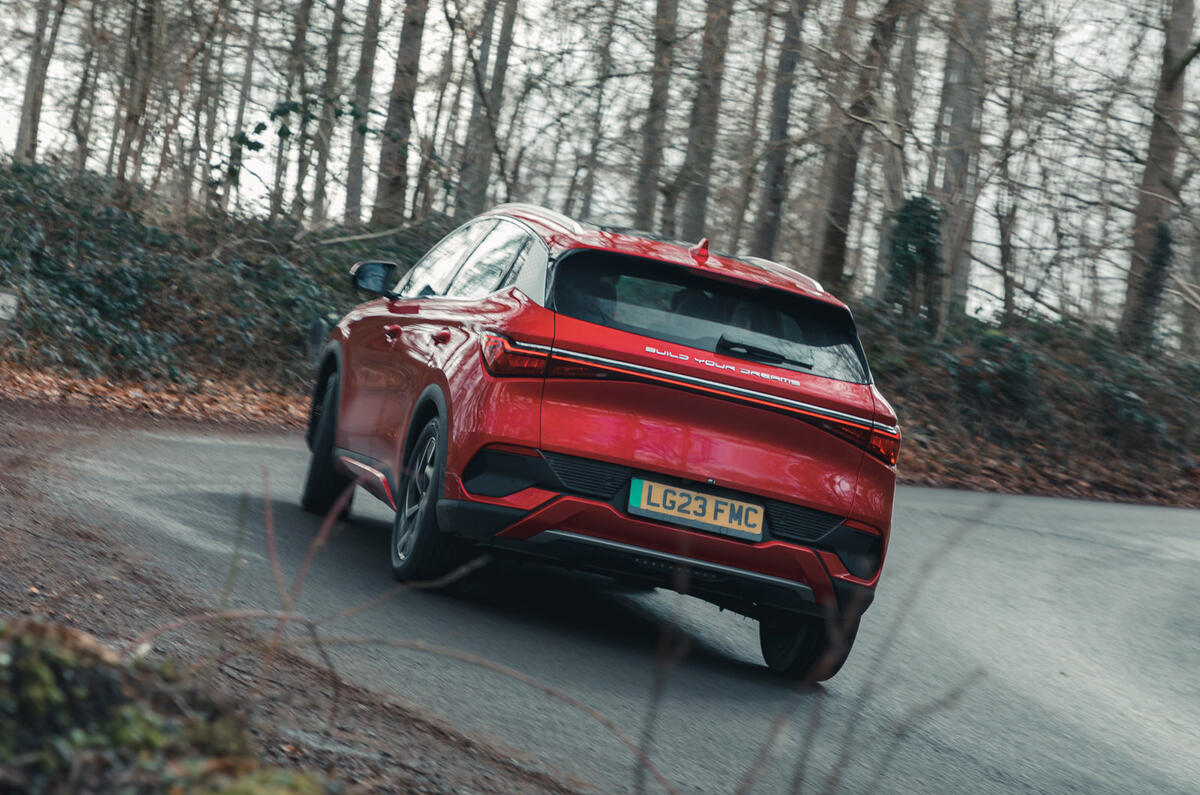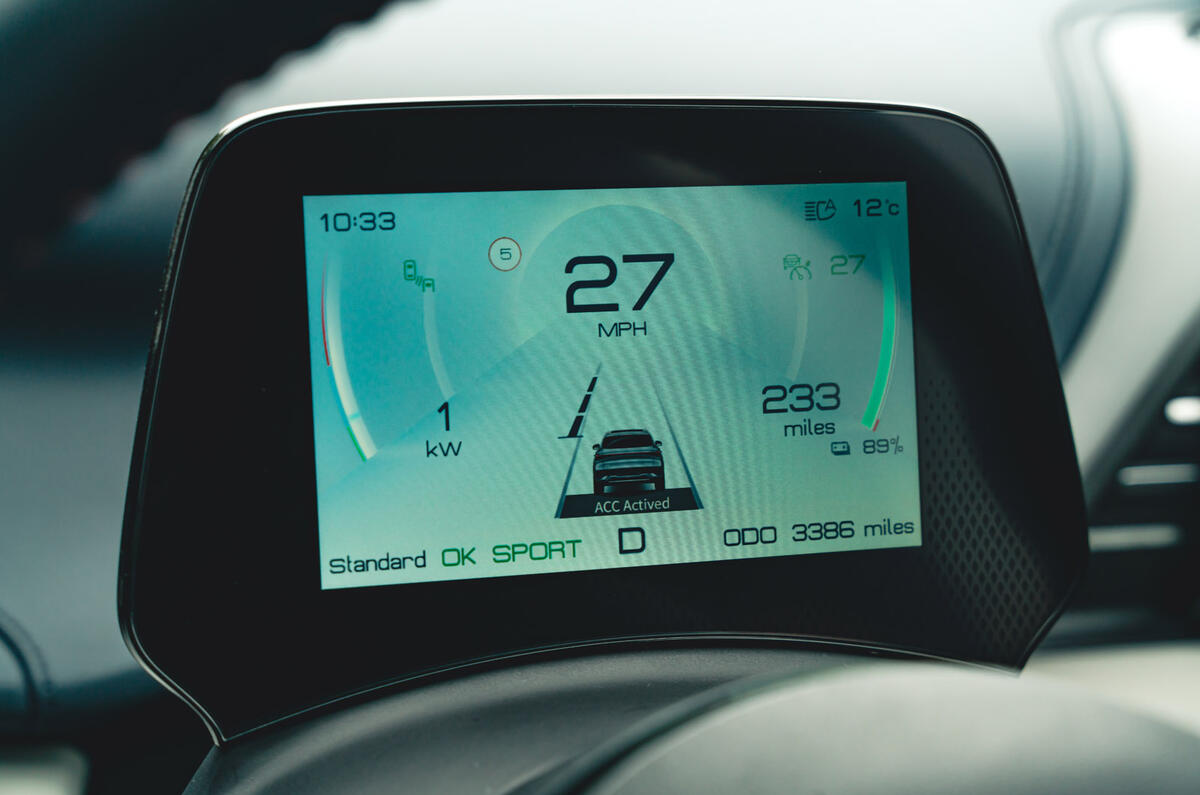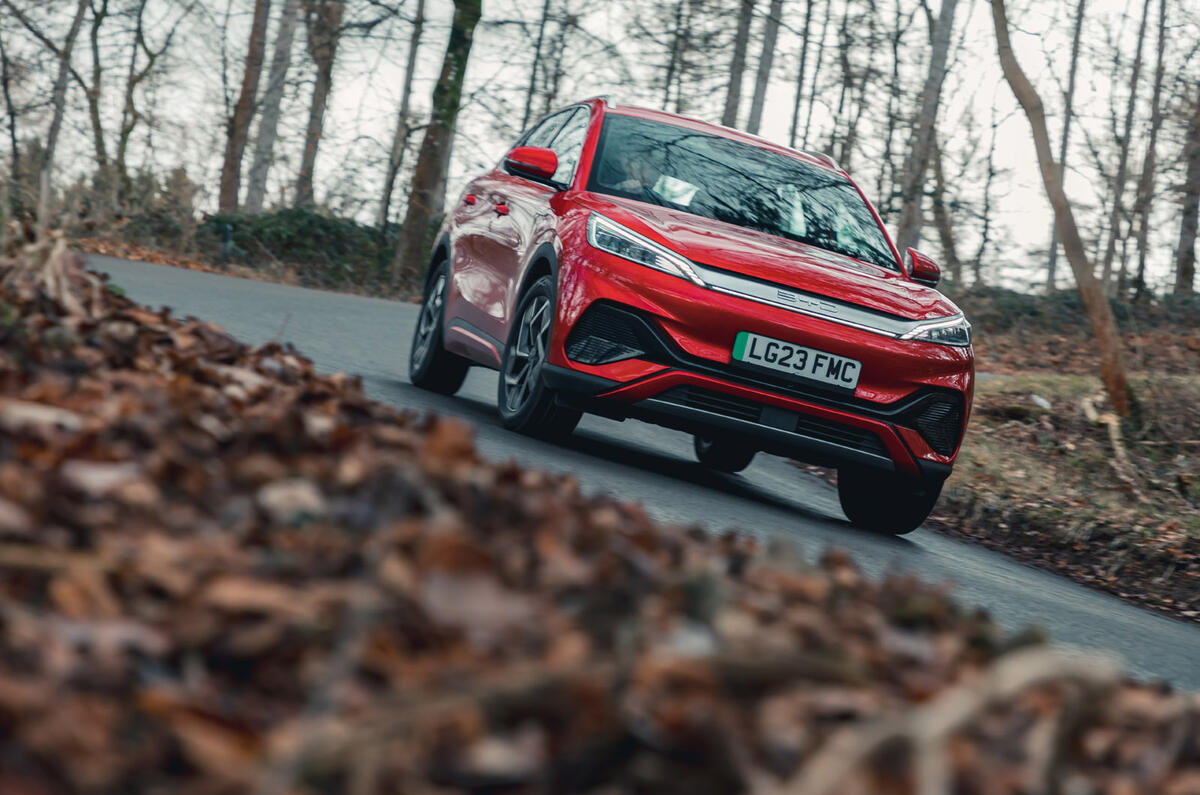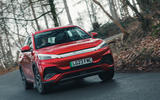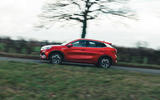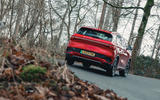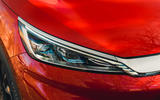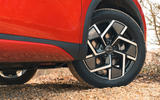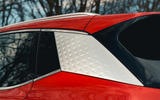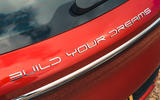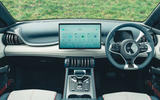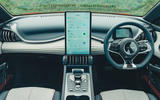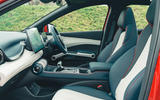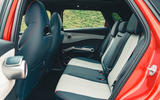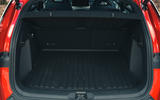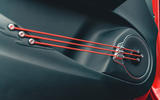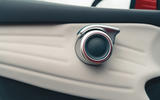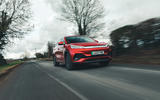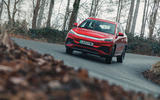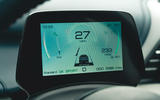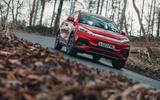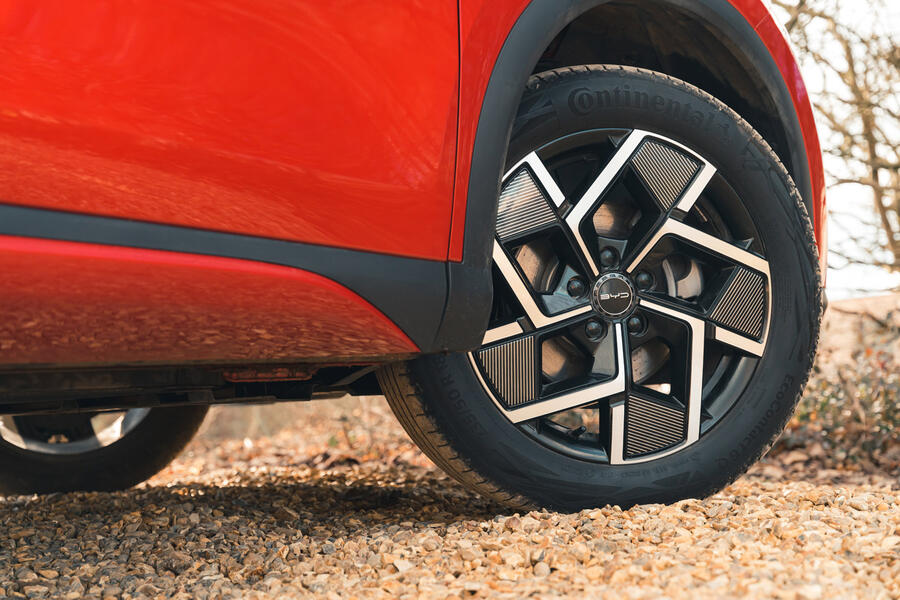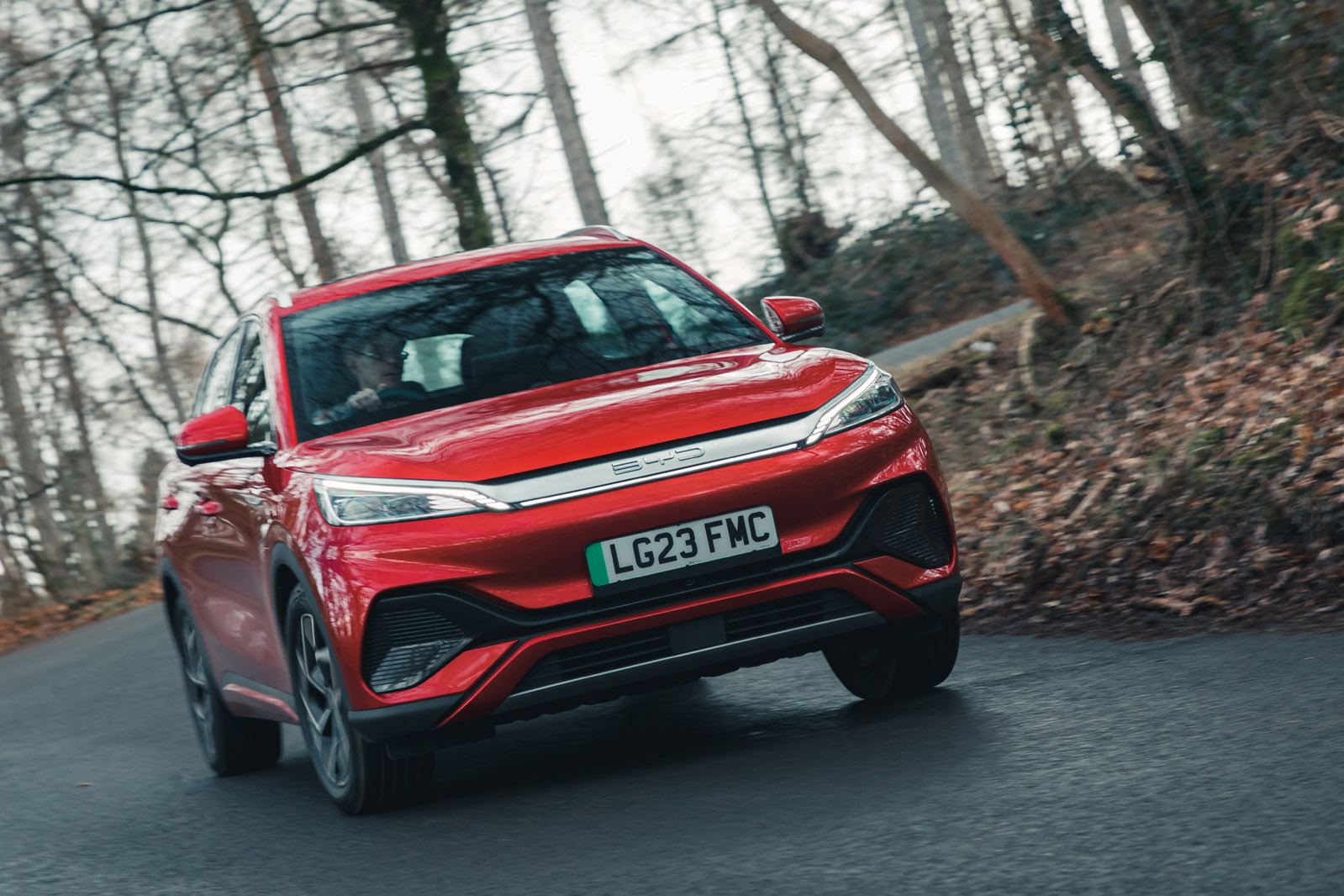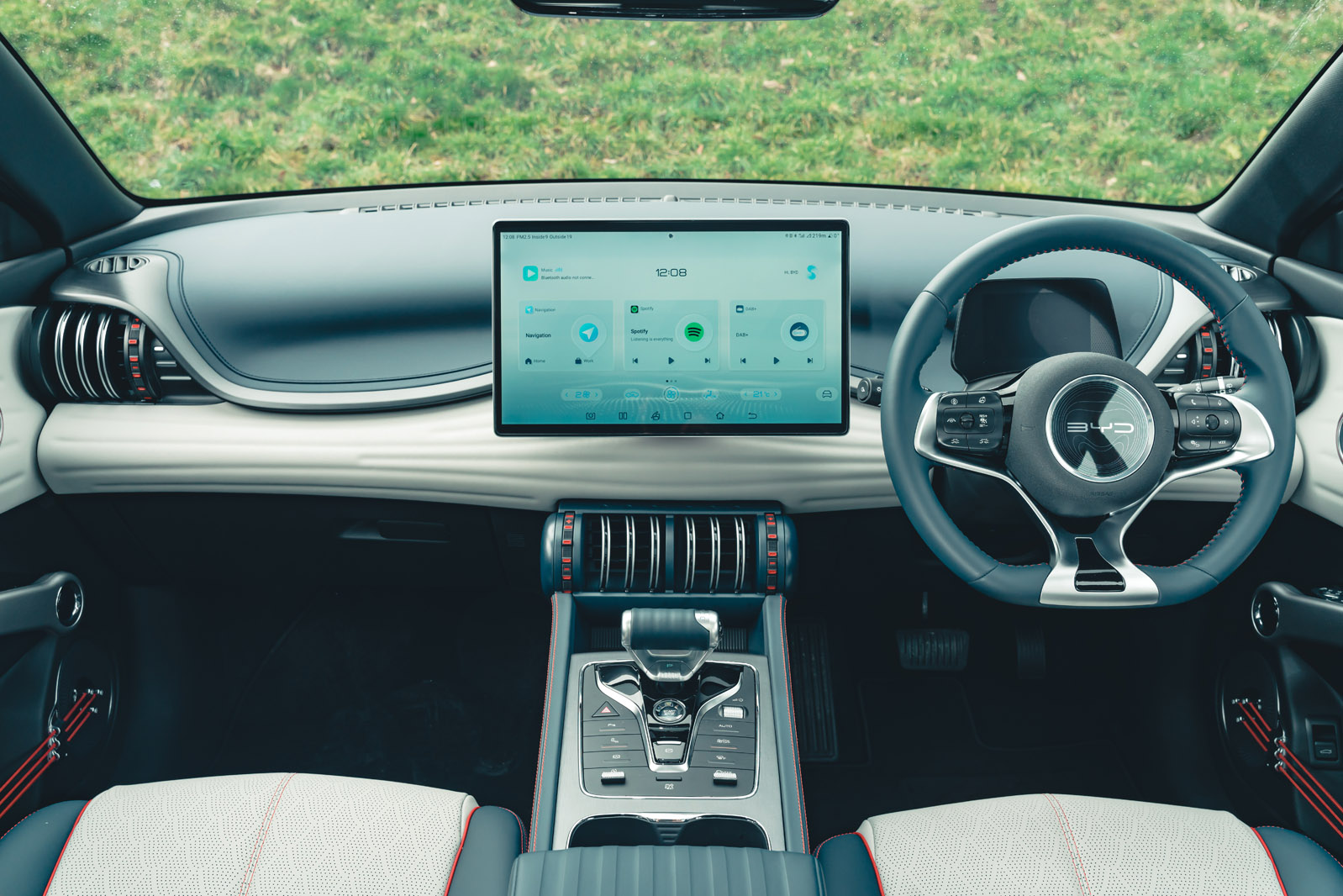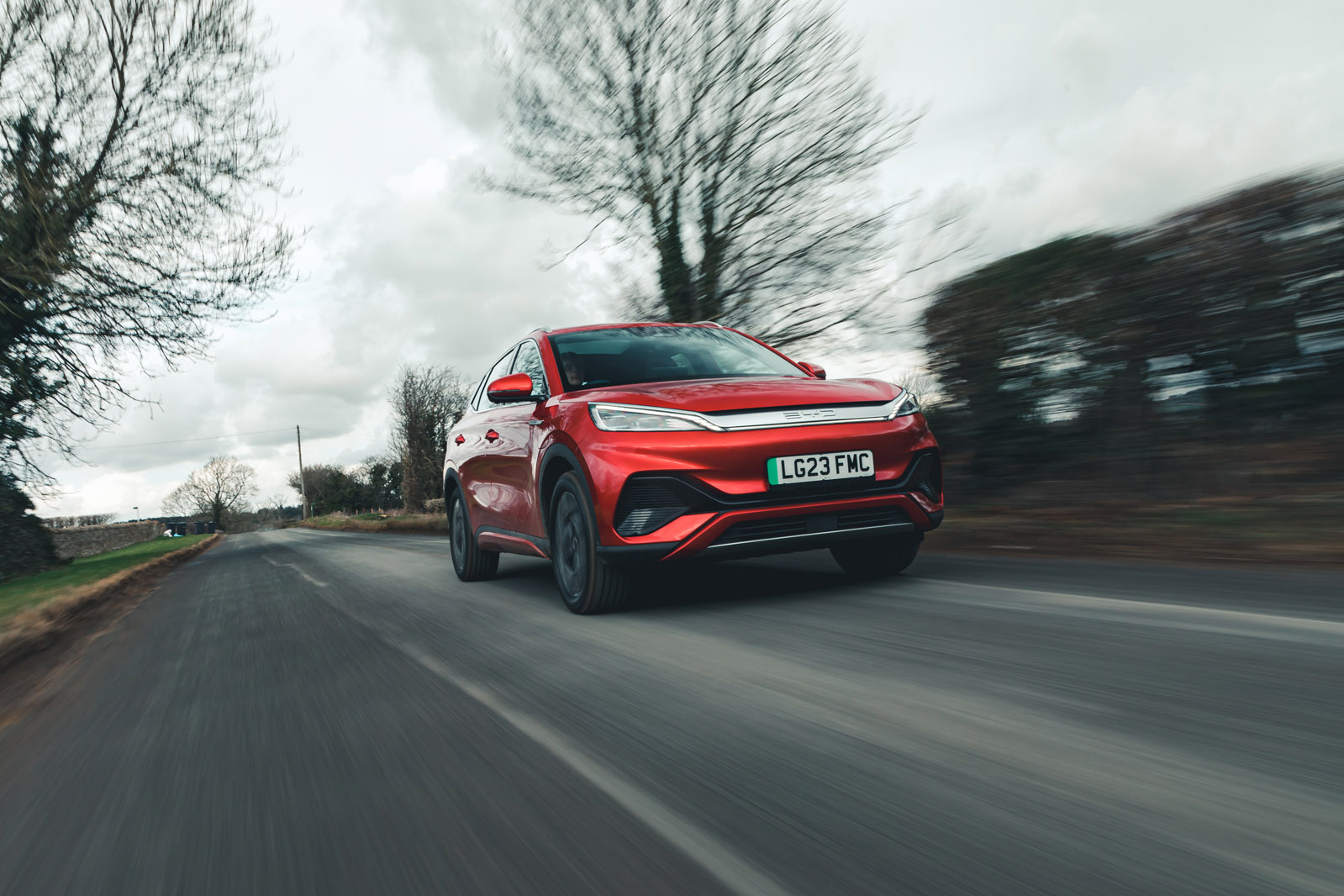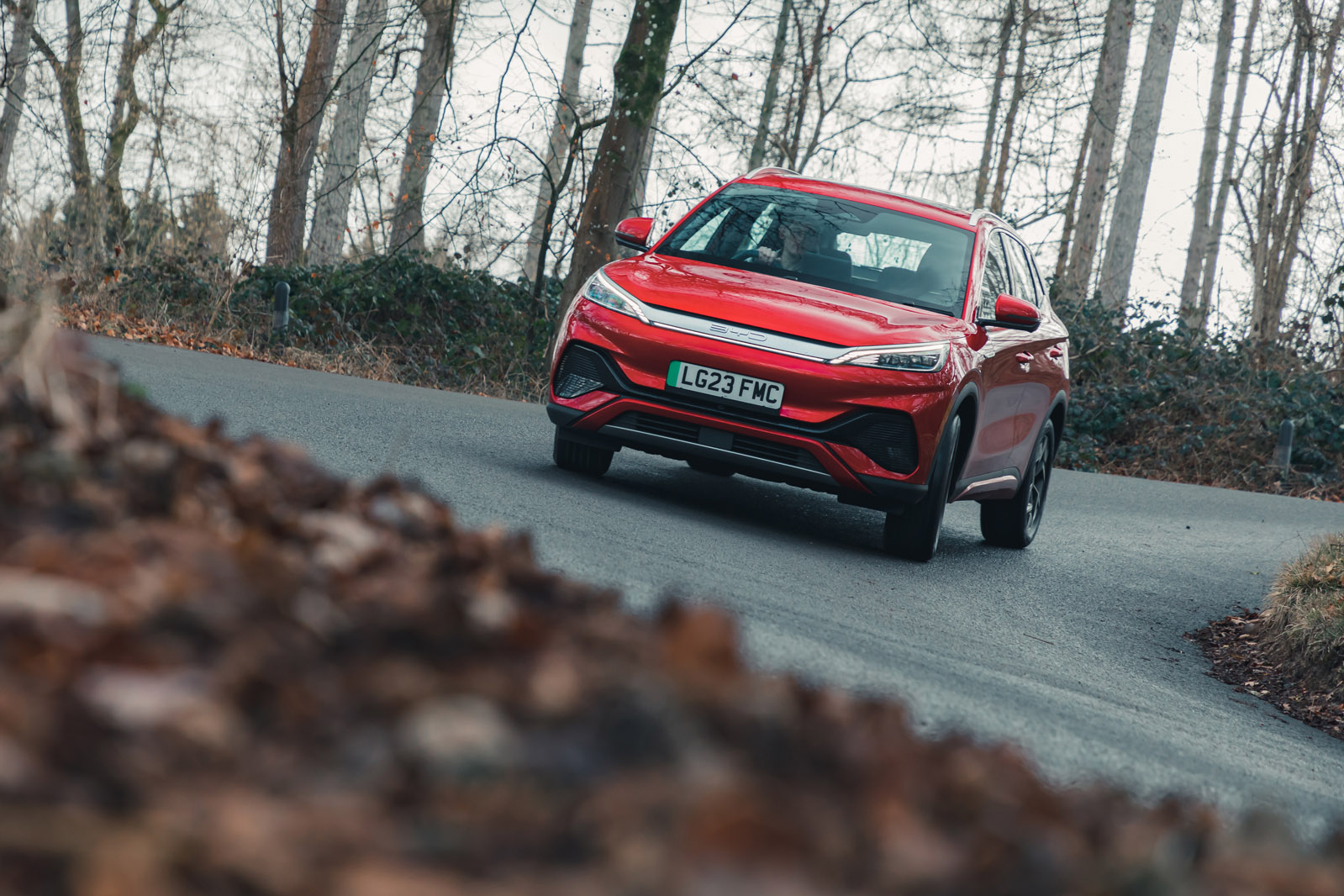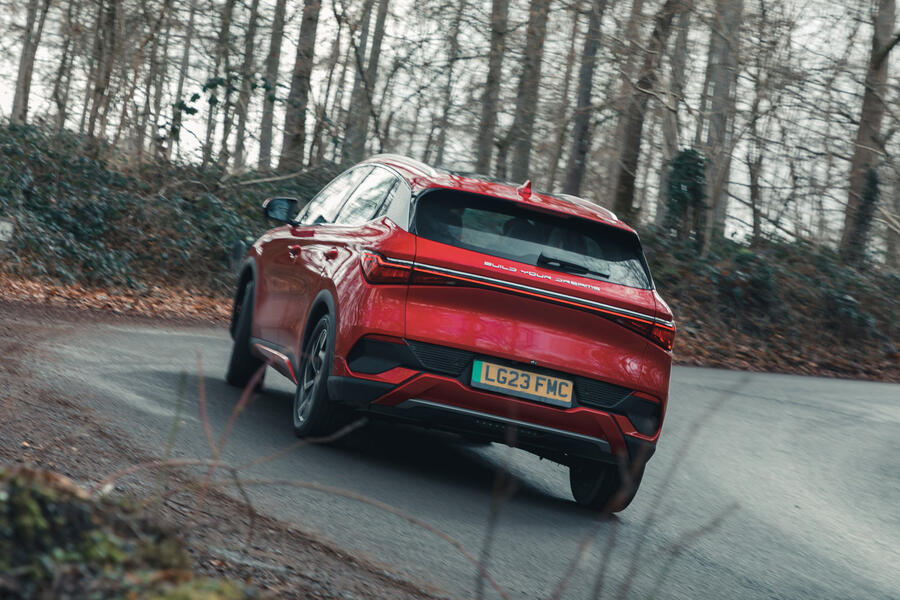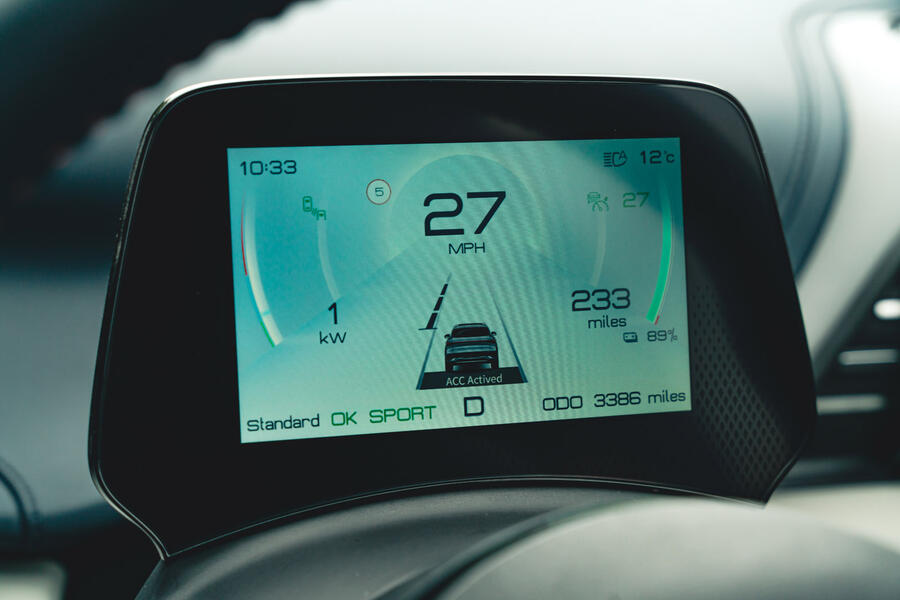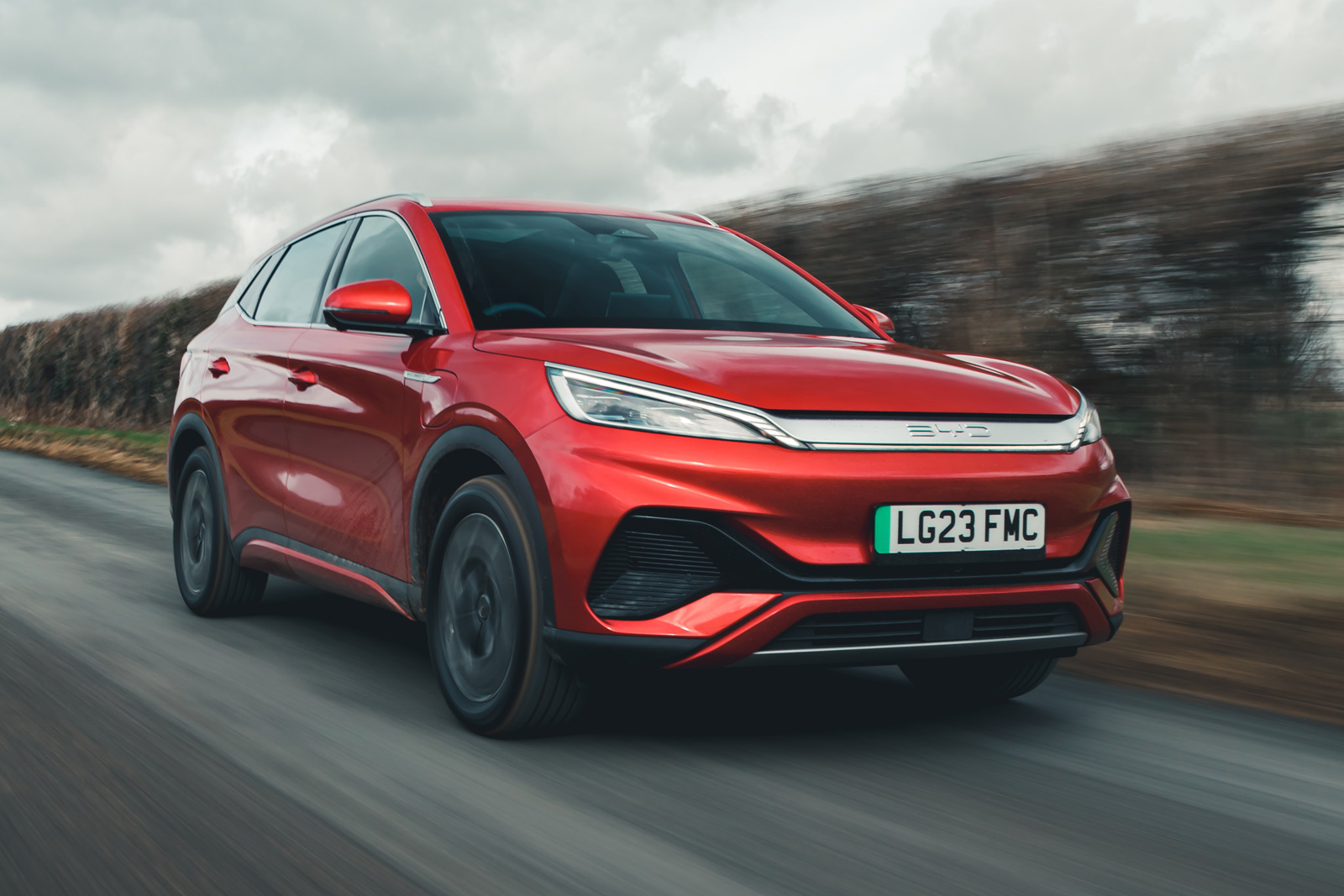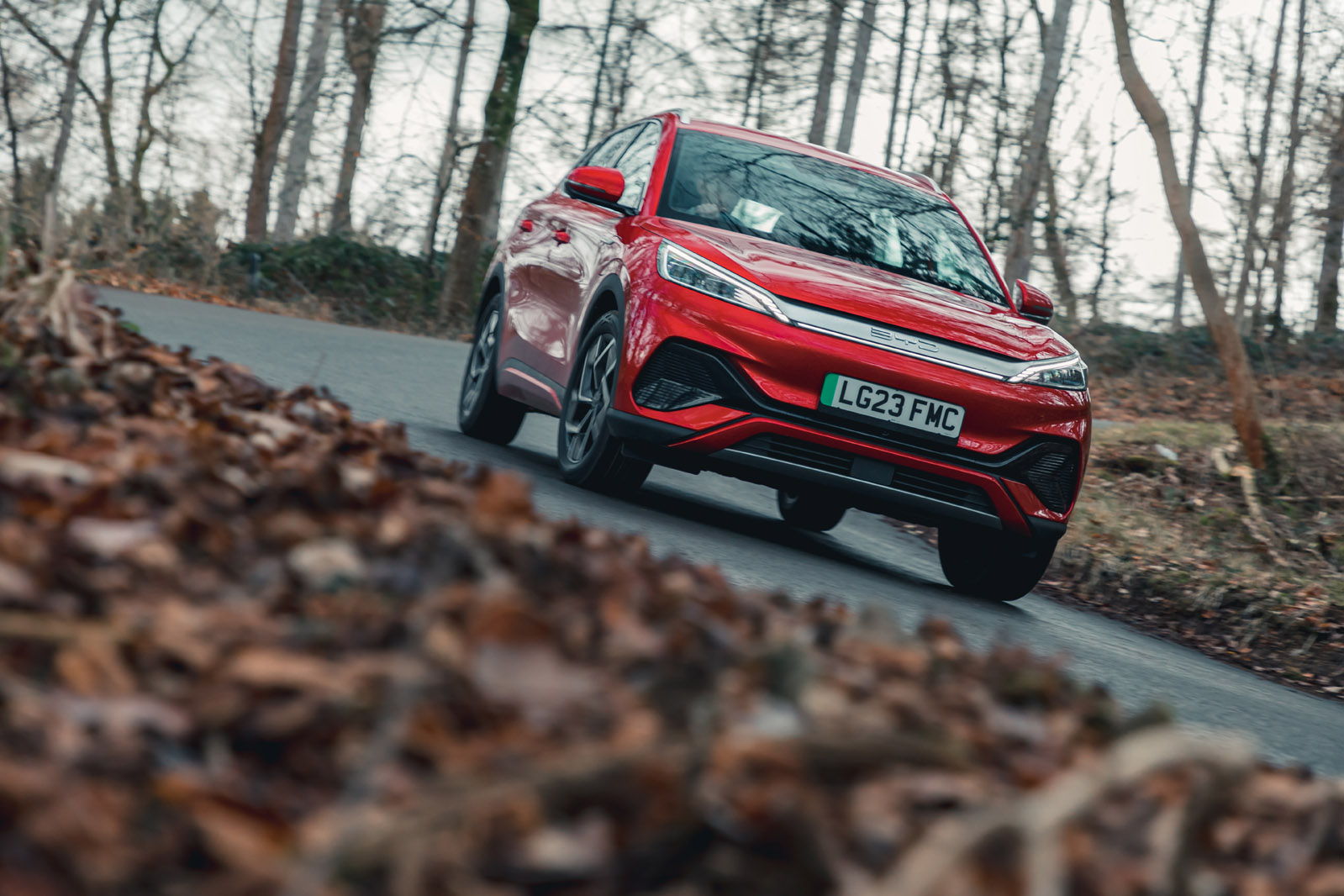If the exterior design of the Atto 3 is slightly bland but inoffensive, it’s clear that all the design creativity went into the interior. The tumble of blue and cream leatherette, the wavy, textured microfibre and the CD-rack air vents can be quite overwhelming. And that’s before you get to the party tricks of the huge rotating screen and banjo-string door pockets.
For some, it could be too bold; for others, it will be a relief from the unending blackness of some cars. On first inspection, everything you touch feels very solid and with a soft finish, though the leatherette unnaturally so. Even on our 3000-mile example, there were a number of marks on the lighter materials – and that’s on a press car, which gets detailed to within an inch of its life between loans.
There are two serious problems with this interior, however. The first is that some of the materials give off a very strong chemical smell, which seems to intensify with heat and as you drive. Like some other Chinese cars, the Atto 3 touts air filtering properties in its menus, but that’s no use if the air outside is already more pleasant than inside.
The other issue is that none of the secondary controls are user-friendly. The driving position is fine, there’s a decently sized lever for the drive selection and there are no capacitive ‘buttons’. So far so good, but the cluster of buttons in the centre console control lesser-used functions, while all the climate controls and important settings are in the touchscreen.
Plenty of cars make that sort of arrangement work just fine, but despite the huge screen, the BYD requires multiple taps to change the temperature and hides the heated seats in a submenu. When using phone mirroring, pulling up the climate menu requires an additional swipe up from the bottom and going deeper into the menus often breaks the Apple CarPlay connection or freezes the whole interface.
The latter issue could potentially be solved with a software update. In fact, on the last day of our loan, the screen said it had updated overnight, which did solve some but not all of the stability issues.
On a more positive note, the Atto 3 makes excellent use of its footprint. It has the same amount of leg room as the Kia Niro EV, and while its boot is marginally smaller, it is a more practical space, with a flat dual-height floor and a much sturdier parcel shelf.
Multimedia system
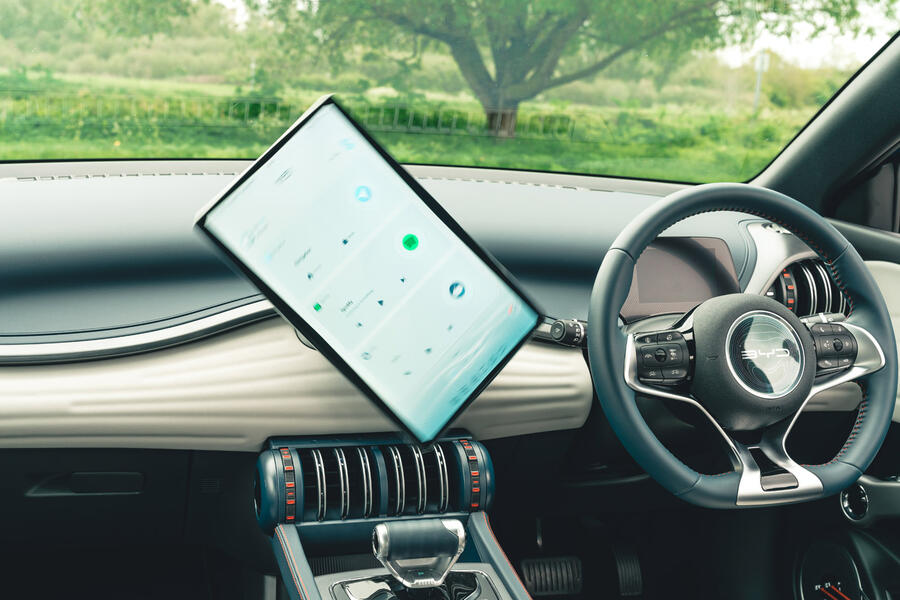
There’s nothing wrong with a party trick, and most will agree a 15.6in screen that rotates on command is an eye-catching one. Whether it’s useful is more debatable. The corners of the screen are very far away, and while BYD says that the vertical mode is ideal for navigation, it sticks out over the dash and impedes forward visibility. Apple CarPlay will also not rotate along with it and will be displayed at a 90deg angle in vertical mode.
Smartphone integration is generally very poor. Apple users need a cable, and Android Auto will be added in a future update. CarPlay takes over the whole screen, making the climate controls and car settings hard to get to, but switching away from CarPlay often crashed or froze the system during testing.
Media played via CarPlay is also not shown in the native interface. The screen generally responds quickly and the built-in navigation is fairly clear and easy to use. However, we found the voice control to be completely hopeless.


